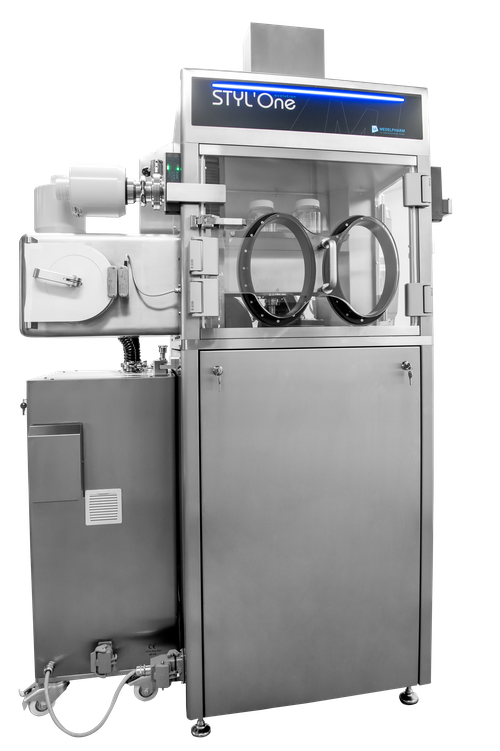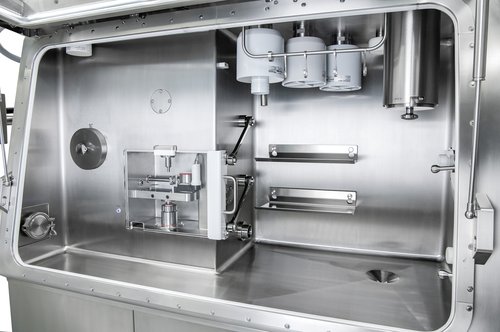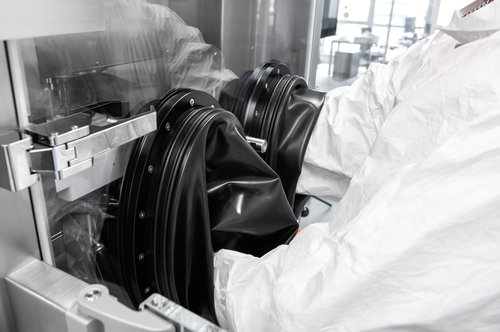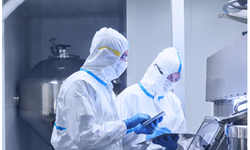The trade-off between ergonomic and safety as well as an important budget for containment solutions is slowing down the acceptance
Most containment systems are cumbersome and increase the time necessary for experiments considerably. Tableting equipment is no exception. Luckily, the market has created solutions and procedures which allow a safe usage of tablet presses.
Even though tablet presses deal with powder in a loose state which can spread in the air, the outcome itself the tablet, is less prone to release loose particles in the ambient.
Still it is the laboratory manager’s task to choose an appropriate method and level of protection for the operator. This is where budget comes into the game.
Different solutions are available for tableting equipment to fit all needs ranging from basic operator protection to the utmost fully contained compression study solution.
The first steps can be taken to improve the protection of the operator beyond standard design keeping the ergonomic impact to a minimum whilst still remaining an affordable solution.
For example, a press using already small volume of powder like the STYL’One can be fitted with reinforced door sealing systems. Using the gloves in the back allows you to manipulate powder while remaining protected. The tablets are being released into tri-clamp connected vessels of your choice for other measurements.
The air inlet/outlet is filtered with a HEPA cartridge system to prevent pollution coming into your equipment or API escaping the compression zone into the atmosphere due to malfunction. A simple and efficient system generates and controls airflow keeping the equipment under negative pressure at all times.

Optional equipment, like flexible isolators, connected to tri-clamps can extend the contained environment further. Before breaking containment, a spray gun freezes all dust particles on the wall and floor of the tablet press to be wiped away. Using protective gowning, your cleaning team can finish the decontamination of the machine safely and prepare it for the next set of measurement.
IF YOU ARE READY FOR THE MOST EXIGENT CONTAINMENT SOLUTION AND HAVE THE BUDGET, YOU CAN HAVE AN ALL-INCLUSIVE ISOLATOR WITH R&D EQUIPMENT AND CLEANING STATION SHARING THE SAME CONTAINED/ISOLATED ZONE THAN THE TABLET PRESS

Bear in mind that the price of containment will easily double or triple the price of the research press.
The concept is quite unique: the R&D press is fully running inside the isolator which is a contained R&D space of its own. The STYL’One Evo is operated through glove ports. At the same time tablets already produced can be weighed and measured inside the isolator.
At the end of the experiment, the whole work space including the press and measuring equipment can be washed down with spray guns, and dried without breaking the containment.
All products and accessories can be moved through entry or exit ports like continuous liners or RTPs to ensure safety at all times. This extended usage of the tablet press containment requires you to operate through four pairs of gloves fitted in the front and in the back of the equipment.
We designed the contained STYL’One so you can also use the research press with the large glass panels open and run the equipment safely according to the CE directives. The vacuum, scales and hardness tester are also in operation inside the working space, which allows them to send the data directly into the central database along with the data acquired during tableting. A very flexible and complete solution for the most demanding laboratories.
Containment becomes a necessity when strict operating and cleaning procedures become too cumbersome to guarantee operator safety or simply do not offer sufficient protection.
Amongst the available cleaning options, the easiest and most straight forward solution is to include a spray bottle with cleaning agent inside the compaction zone, or bring it through the RTP port at the last minute.
The operator can spray the compression zone manually to capture any loose powder into liquid, to be swiped off the wall later. Wearing some protective clothing, an operator can open the containment and finish the cleaning by hand. A simple, yet efficient way to further protect your operators during this last cleaning phase.
Amongst the available cleaning options, the easiest and most straight forward solution is to include a spray bottle with cleaning agent inside the compaction zone, or bring it through the RTP port at the last minute.

The operator can spray the compression zone manually to capture any loose powder into liquid, to be swiped off the wall later. Wearing some protective clothing, an operator can open the containment and finish the cleaning by hand. A simple, yet efficient way to further protect your operators during this last cleaning phase.
A second option is to have an on-site fully washable solution. After the experiments are performed, the press can be dismantled and the parts can be cleaned inside the isolator. Alternatively the parts can be evacuated through an exit port for cleaning. The spray guns inside the isolator allow you to wash down everything including the scale, hardness tester, tablet press, etc. The drains on each side of the press allow polluted cleaning liquid to be safely removed. Using dry air and/or solvent offers the ability to have a dry compression chamber ready for the next experiments without breaking containment.
Stringent laws, API potency and an increased awareness are the drivers for extended containment requirements
By flooding the machine with Nitrogen, one removes oxygen and prevents oxidization of powder used in tablet production and of the tablet itself. Once produced, these prototype tablets are packed into airtight packages, still under Nitrogen environment, to be opened by the final end user.
Preventing air exchange between the compression zone and the atmosphere means, one can rapidly reach a low oxygen level and maintain it while leaking small amounts of Nitrogen in the environment.
Thinking about your safety requirements and the ergonomics of the solution is critical before finalizing the specifications.
The author


















